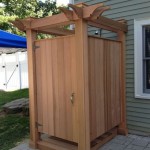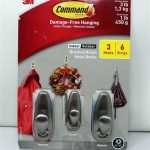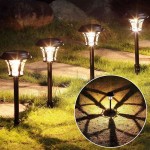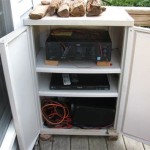Outdoor Fire Pit Building Code: Essential Guidelines for Safety
Outdoor fire pits provide warmth, ambiance, and a cozy gathering space in backyards and patios. However, to ensure safety and prevent accidents, it's crucial to adhere to local building codes when constructing or using fire pits. These codes vary by region, but some essential aspects remain consistent.
Location and Clearance
Fire pits should be located a safe distance from structures, trees, and other flammable materials. The specific clearance requirements vary depending on local regulations, but a minimum distance of 10-15 feet is generally recommended. This creates a buffer zone to prevent heat transfer and minimize the risk of fire spreading.
Fire Pit Size and Materials
The size and materials used for the fire pit play a role in safety. Fire pits should be small enough to contain the fire adequately but large enough to provide a reasonable amount of heat and ambiance. They should be constructed from non-combustible materials such as concrete, brick, or metal to prevent burning or smoldering.
Chimney or Vent
Some municipalities require fire pits to have a chimney or vent to disperse smoke and heat. This helps prevent the accumulation of harmful fumes and smoke inhalation. The chimney or vent should be tall enough to extend above the height of any surrounding structures.
Fire Extinguisher and Fire Safety Kit
It's essential to have a fire extinguisher nearby when using a fire pit. The extinguisher should be rated for outdoor use and easily accessible in case of an emergency. Additionally, a fire safety kit containing gloves, a shovel, and a bucket of water or sand can be helpful for containing or extinguishing small fires.
Safe Firewood Use
Only use seasoned firewood in the fire pit. Seasoned firewood has been dried and cured to reduce its moisture content, making it burn cleaner and produce less smoke. Avoid using wet or green firewood, as it can create excessive smoke and pose a safety hazard.
Fire Safety Precautions
Always exercise caution when using a fire pit. Never leave the fire unattended, and keep children and pets away from it. Avoid using accelerants like gasoline or lighter fluid, as they can cause explosions. Ensure that the fire is completely extinguished before leaving the area.
Compliance and Inspection
It's important to comply with local building codes and consult with municipal authorities before constructing or using a fire pit. They can provide specific requirements and guidance to ensure safety and compliance.
By following these essential building code guidelines, you can enjoy the benefits of an outdoor fire pit safely and responsibly. Remember to prioritize safety, seek professional guidance when needed, and enjoy the warmth and ambiance it brings to your outdoor space.

Home Ownership Matters 3 Common Backyard Fire Pit Laws And Regulations Homeowners Should Know

How To Build A Fire Pit Lowe S

Outdoor Fire Pit Landing Complete Home Concepts

Outdoor Fire Pit Landing Complete Home Concepts

How To Build A Fire Pit Lowe S

Building A Fire Pit

How To Build An Easy Backyard Fire Pit

Planning Your Outdoor Fireplace Or Fire Pit Effectively

Outdoor Fire Pit Design Ideas Landscaping Network

10 Tips For Planning An Outdoor Fireplace Borst Landscape








